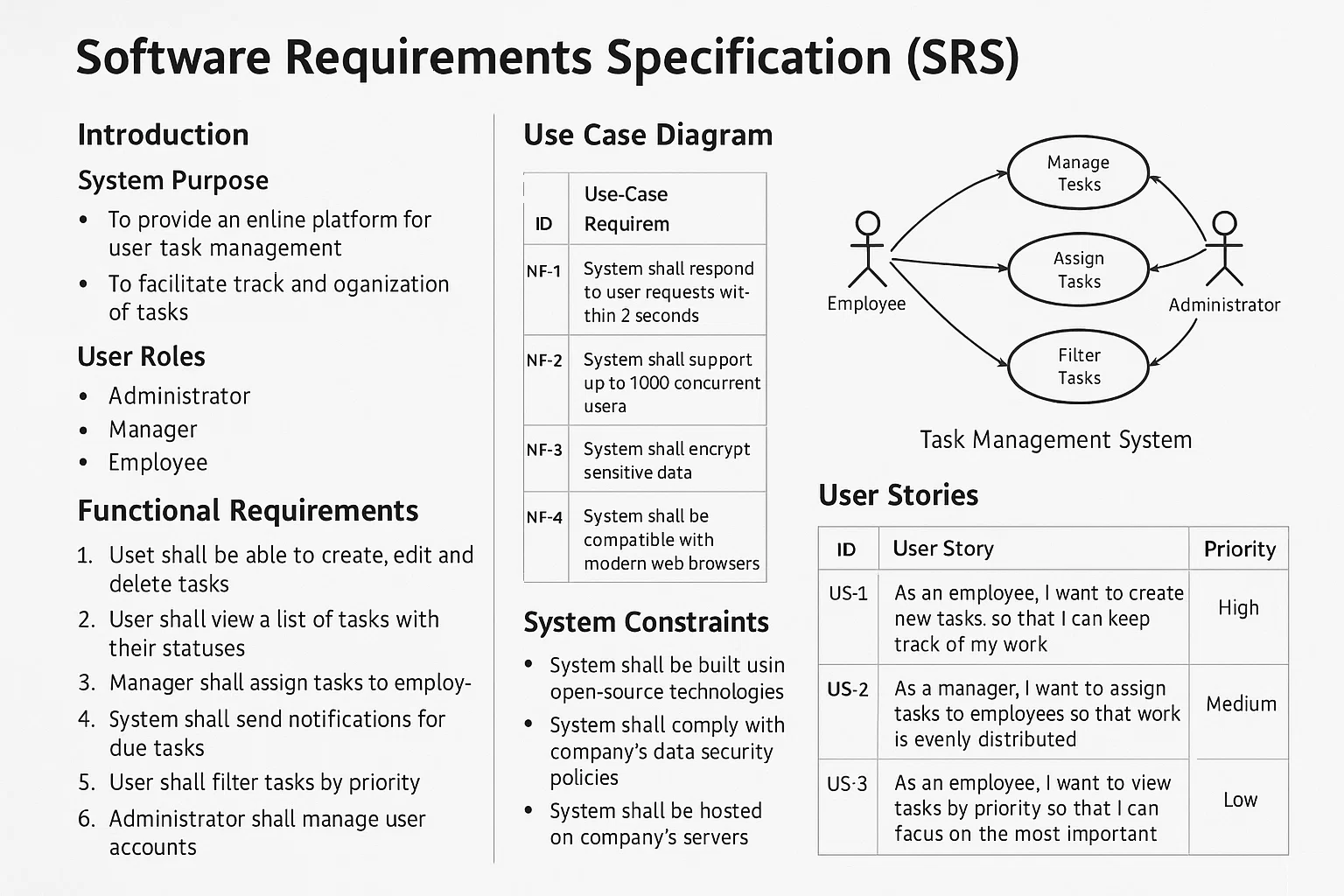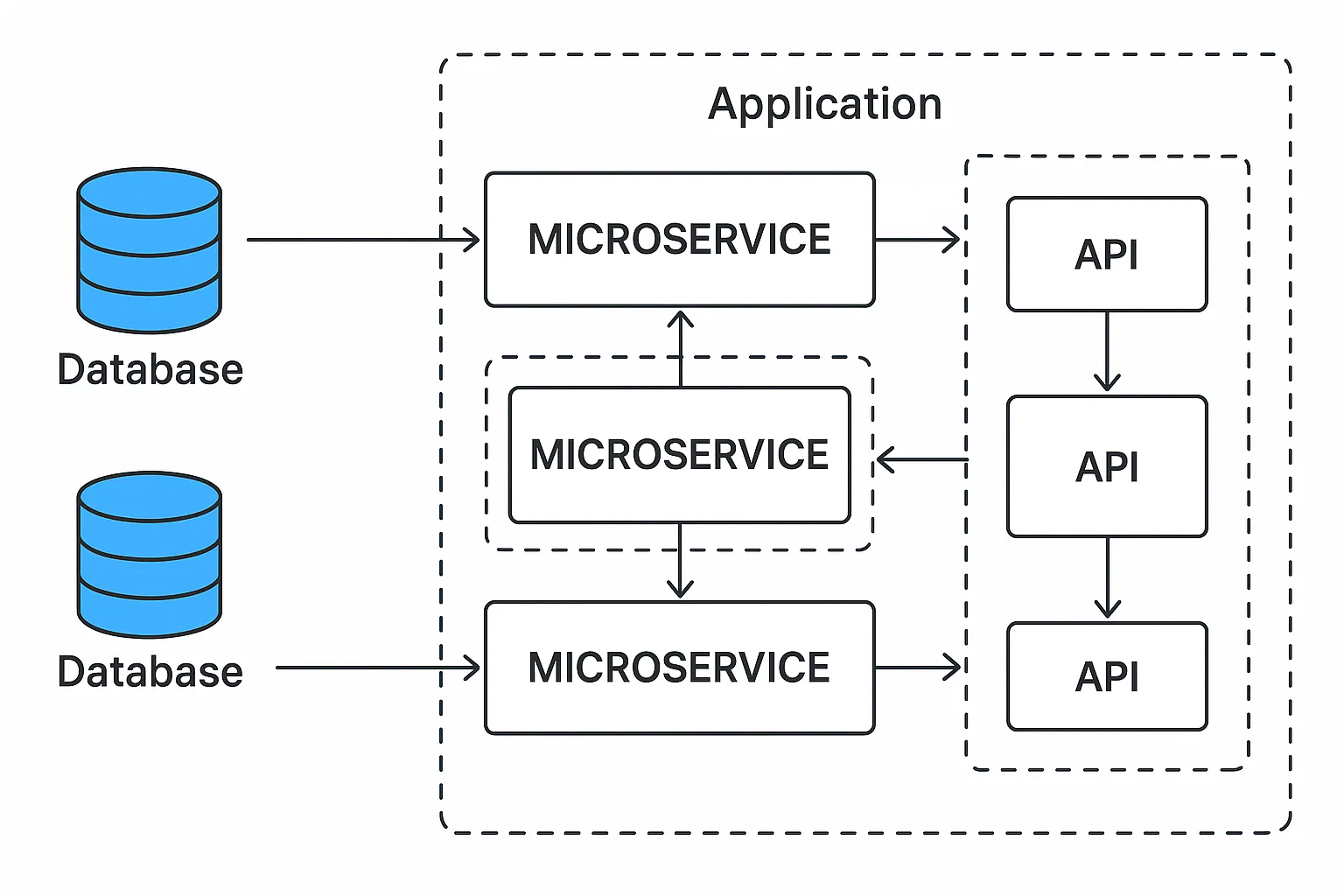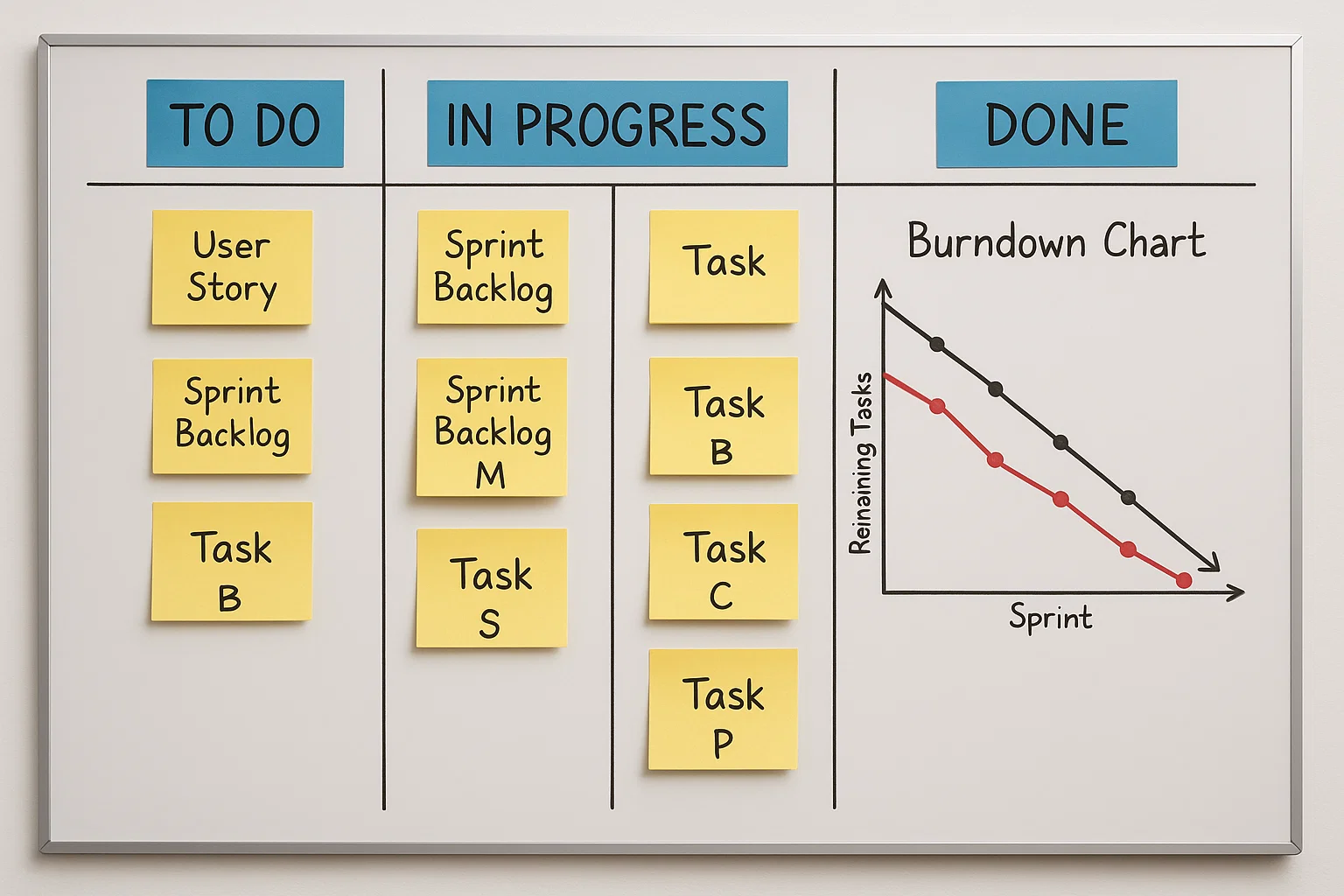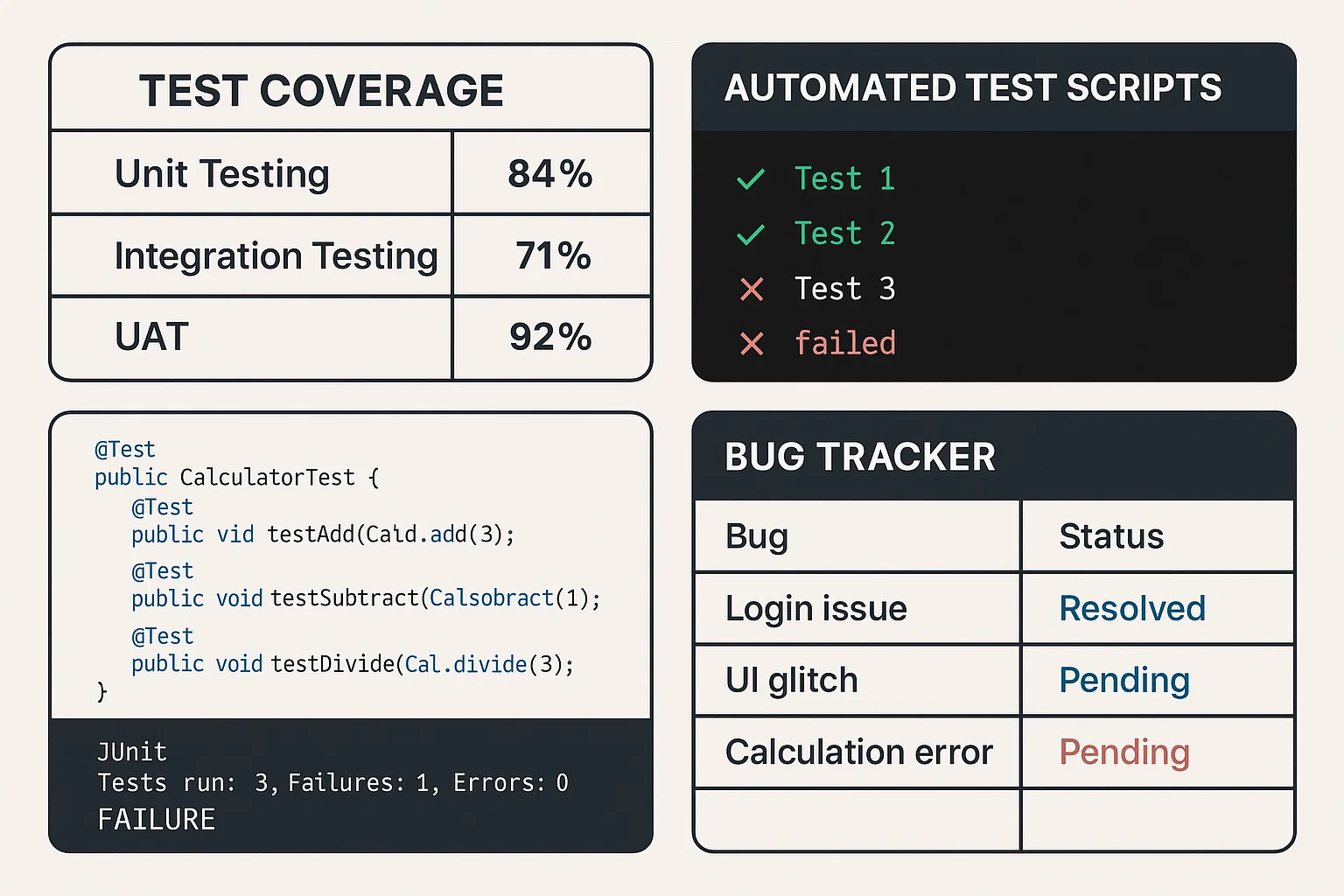Expert Assignment Solutions with 100% Guaranteed Success
Get Guaranteed success with our Top Notch Qualified Team ! Our Experts provide clear, step-by-step solutions and personalized tutoring to make sure you pass every course with good grades. We’re here for you 24/7, making sure you get desired results !
We Are The Most Trusted
Helping Students Ace Their Assignments & Exams with 100% Guaranteed Results
Featured Assignments

Requirements Gathering and Software Specification
Software EngineeringClient Requirements
The student needed to demonstrate their ability to gather and analyze requirements for a software project. The task required them to conduct interviews with potential stakeholders, define both functional and non-functional requirements, and prepare a Software Requirements Specification (SRS) document. This document was expected to be detailed, with clear descriptions of user needs, constraints, and system features.
Challenges Faced
We ensured that the students understood the importance of translating user needs into precise and actionable software requirements. Some faced challenges while trying to define clear and measurable requirements, often finding it difficult to differentiate between functional and non-functional requirements. Additionally, students struggled with incorporating stakeholders' feedback effectively into the final specification.
Our Solution
We guided the students through a structured requirements gathering process, starting with identifying key stakeholders, conducting mock interviews, and collecting both user stories and system requirements. We provided templates and examples of well-written SRS documents, showing how to organize requirements logically and ensuring that all necessary components, such as system constraints and assumptions, were included.
Results Achieved
The students successfully delivered comprehensive Software Requirements Specification documents, demonstrating a strong ability to communicate user needs and system capabilities. Their work was characterized by clarity and precision, with a clear distinction between functional and non-functional requirements, and was supported by realistic scenarios and user inputs.
Client Review
My experience with this assignment was very insightful. The process of gathering requirements and creating a detailed SRS helped me understand the importance of clear communication between stakeholders and developers. The structured approach made it easier to break down complex user needs into manageable tasks. I was impressed with how the feedback and resources provided helped me refine my document into a thorough specification.

Software Architecture and Design
Software ArchitectureClient Requirements
The student wanted to develop their understanding of software architecture by designing the architecture for a mid-sized application. They were tasked with selecting an appropriate architecture style (e.g., layered, microservices, client-server) and designing a system that included components like databases, user interfaces, and services. The design should also consider scalability, maintainability, and modularity.
Challenges Faced
We encountered complications in ensuring that students understood the trade-offs between different architectural patterns. Some students initially chose architectures that didn't fully meet the scalability or modularity needs of the project. Additionally, many struggled to balance system complexity with maintainability, often overcomplicating their designs.
Our Solution
We provided students with detailed explanations of various architecture styles and the principles behind each one. We encouraged them to conduct a needs analysis and justify their architectural choices based on the project’s scale, user requirements, and long-term maintenance. Through diagrams and modeling tools, students were guided to visualize the components and their interactions.
Results Achieved
The students successfully designed scalable and maintainable software architectures. Their designs included clear diagrams and descriptions of components, interfaces, and data flow. Most students were able to justify their architectural decisions with a clear understanding of the system’s needs, and their designs reflected an understanding of key concepts such as separation of concerns and scalability.
Client Review
I had a great experience working on this assignment. The challenge of selecting the right software architecture for the system made me consider long-term project goals and scalability. The guidance provided made it easier to evaluate different architectural styles, and the process of modeling the system was incredibly educational. I now feel more confident in designing software architectures that meet both functional and non-functional requirements.

Agile Methodology and Scrum Practices
Agile DevelopmentClient Requirements
The student needed to apply Agile practices, specifically Scrum, to manage a software development project. They were tasked with working in a team to develop a product incrementally, using Scrum ceremonies such as sprint planning, daily stand-ups, and sprint reviews. The assignment required them to document each sprint’s tasks, results, and retrospectives, focusing on how Agile methodologies helped achieve efficient development.
Challenges Faced
We faced some challenges handling students' unfamiliarity with the Agile framework and Scrum roles. Some students initially struggled with the fast-paced, iterative nature of Agile and had difficulty adapting to working in sprints. Others struggled with keeping track of tasks in a way that aligned with the Scrum methodology, particularly in terms of prioritization and delivering incremental value.
Our Solution
We provided a crash course on Agile and Scrum methodologies, explaining key concepts like sprints, backlogs, user stories, and velocity. Students were assigned to groups, each responsible for delivering an increment of the software product every few weeks. Regular check-ins were held to ensure they were correctly following Scrum practices and managing their work in an iterative fashion. Tools like Jira were introduced for task management.
Results Achieved
The students effectively managed their projects using Agile principles, delivering functional software increments on time. Their Scrum documentation was thorough, including detailed sprint backlogs, progress reports, and retrospective analysis. They demonstrated improved collaboration, adaptability, and the ability to manage development cycles in a fast-paced environment.
Client Review
My experience with this assignment was extremely positive. Applying Scrum in a real-world context helped me understand how Agile can boost team productivity and ensure continuous improvement. The sprint-based approach gave me a sense of what it’s like to work in a real software development environment, and the retrospective exercises were particularly useful in learning how to adapt and improve. I feel much more prepared to work in an Agile environment.

Software Testing and Quality Assurance
Software Testing and Quality AssuranceClient Requirements
The student needed to understand software testing practices by applying them to a real-world project. They were tasked with writing unit tests, integration tests, and conducting user acceptance testing (UAT) for a software application. They had to ensure that the software met the required quality standards, including identifying bugs, verifying functionality, and improving overall system performance through rigorous testing.
Challenges Faced
We encountered challenges in ensuring that students understood the different levels of testing and how to effectively apply them. Some students struggled with writing meaningful test cases that covered edge cases or with automating tests in a way that was both efficient and thorough. Others had difficulty integrating testing into the overall software development lifecycle.
Our Solution
We provided a detailed guide on writing and organizing test cases for different types of testing. Students were shown how to use testing frameworks like JUnit for unit testing and integration tests, and they were introduced to automated testing tools such as Selenium for UI testing. We also explained the importance of continuous integration and how to integrate testing into the development process.
Results Achieved
Students successfully applied a multi-level testing approach, identifying key areas of the software that needed improvement. Their tests were thorough, covering both functional and non-functional requirements. Most students were able to automate their testing process and demonstrated how regular testing helped catch bugs early, improving software quality.
Client Review
This assignment was an eye-opener in terms of software quality assurance. Writing comprehensive tests made me realize how crucial it is to catch bugs early and ensure functionality. The tools and methods introduced for automating tests were especially useful, and I now feel much more confident in my ability to write meaningful tests that improve the overall quality of the software. It was a challenging yet very rewarding task.
